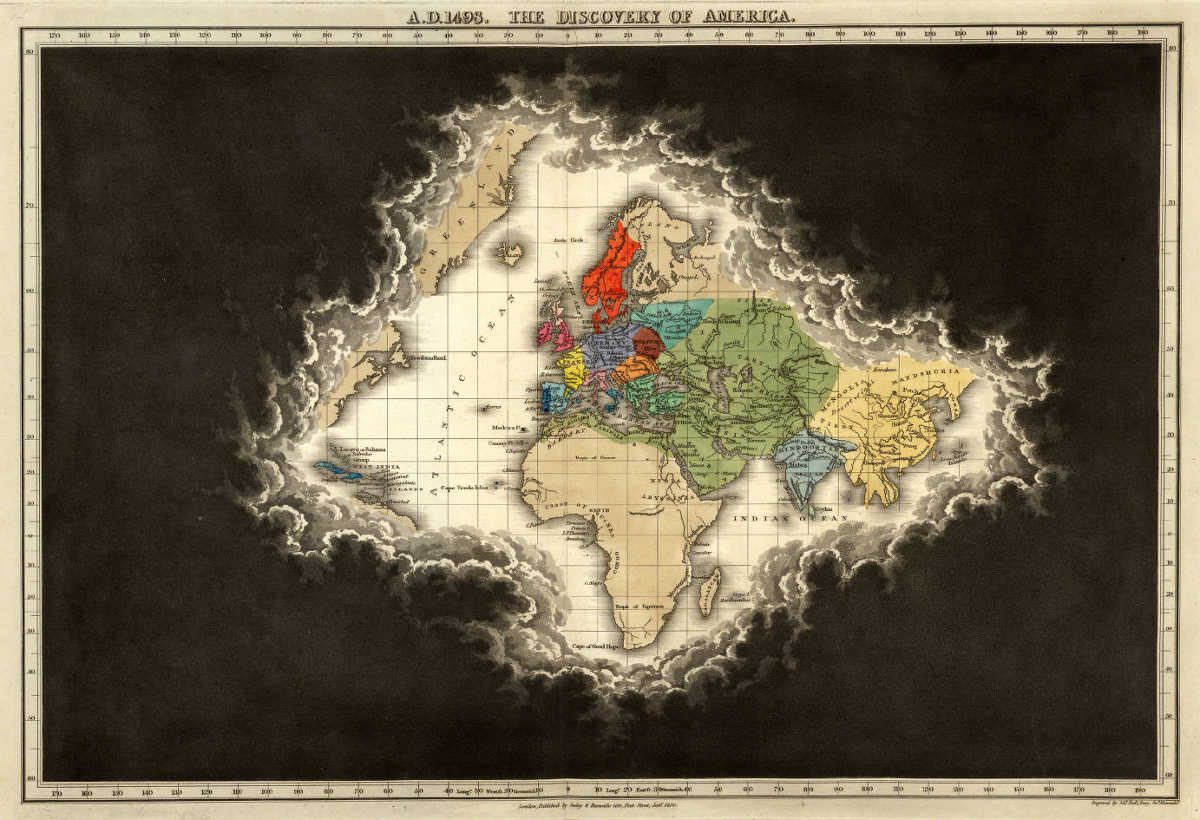
For his Historical Atlas of 1830, Edward Quin took a different approach than other cartographers: Rather than present history as a series of discrete moments, he illustrates the growth of knowledge by covering the earth in obscuring clouds that are beaten back from panel to panel.
“In Quin’s Historical Atlas, the world is shown first in darkness, with clouds obscuring everything outside the Garden of Eden,” note Anthony Grafton and Daniel Rosenberg in Cartographies of Time. “Gradually, as history reveals more of the world, the clouds roll back. Turning the pages of the atlas is a bit like riffling through a flip book, watching darkness recede and the world known to Europeans grow.”
